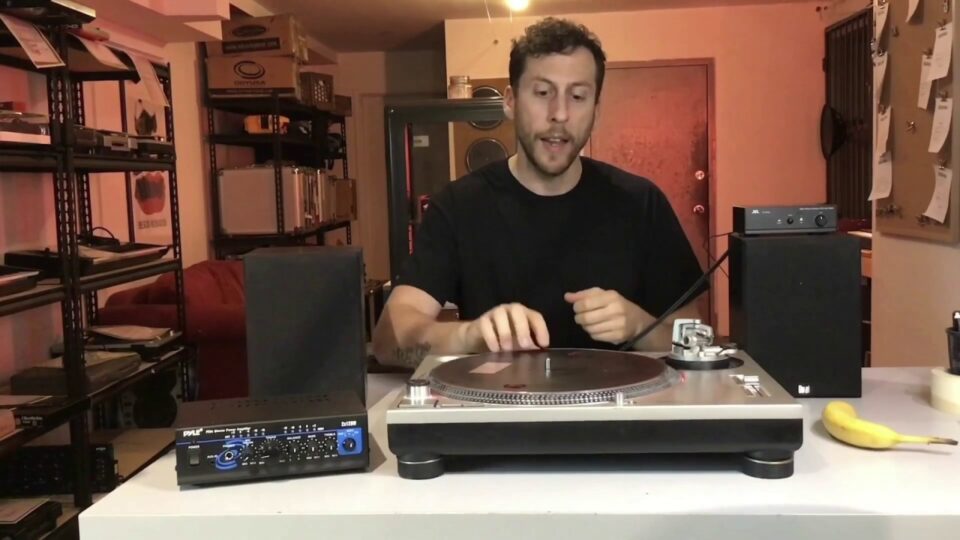Setting up your record player is easy, but you need to know a few important details. First, make sure it’s running at 45 RPM. Then, you need to find out the exact speed your records need to play. Many models are dual-speed, meaning they can play all kinds of records. Some have a third speed that’s useful if you’re trying to listen to a lot of vinyl.
Once you’ve got your player set up correctly, the next step is to plug in your cartridge. Many record players have built-in speakers that allow you to listen to your records right away. If yours doesn’t have this feature, you can use external speakers. However, keep in mind that the built-in speakers don’t always provide good sound. If you want to have the best sound, you can also plug in an external set of speakers.
After plugging in the wires, you need to balance the tonearm. If it’s too high, the stylus can damage the records and the sound can be distorted. To do this, remove the stylus cover and turn the counterweight back and forth. If the counterweight is too light, the tonearm will not rotate properly. Once you’ve balanced the cartridge, you can now connect the record player to your computer’s speakers.
You can now listen to your records. If your record player has built-in speakers, you can plug them in. If yours doesn’t, you’ll need to buy external speakers. If you’re using your record player with speakers, it’s best to invest in some high-quality ones. You’ll be glad you did. It will give you great sound quality, so make sure to use a good quality one.
Once you’ve balanced the cartridge, you need to balance the tonearm. The tonearm is the part of the record player that holds the records. The platter is also referred to as the turntable. It spins at a constant speed. Once you’ve adjusted the arm, you can move on to the next step. Now, you can tune your record. You can even adjust the volume to your liking.
After you’ve installed the cartridge, you need to fit the stylus. Once you’ve done this, remove the protective guard from the stylus. Then, place the pressure gauge at the center of the tonearm. Then, lower the stylus slowly onto the gauge. To balance the tonearm, you can rotate the counterweight to add more weight to the tonearm. Afterwards, you can place the stylus back into the cover.
Once you’ve plugged in your record player, you need to turn it on. To turn it on, turn the switch on. Then, place the record in the player and press the power button. After that, you should place the arm above the desired track. Then, you need to connect the power cord. Then, turn on the amplifier. After that, the signal should reach the speakers.
What is a turntable preamp?

A turntable preamp is a device that amplifies the audio signal from your turntable. While some turntables have built-in preamps, the more expensive models typically lack one. The purpose of the preamp is to improve the quality of the sound from your turntable. You should check the user manual to find out more about your turntable’s features and how they can help you get the best performance from it.
Many turntables now come with a built-in phono preamp. Although a built-in phono preamplifier is convenient, it is not necessary. An external phono preamp will give your records a clearer sound. There are two types of phono amplifiers: those that work with moving magnetic cartridges and those that work with moving coils. Some of them have both.
Before choosing a turntable preamp, it is important to learn what a turntable preamp is. A phono preamp is the heart of a record player, transforming the sound of a vinyl record into an electric signal. However, this signal is much weaker than the signal from a CD player, which is why you need a basic preamp to boost the signal. Fortunately, many modern record players come with a built-in phono stage, so there’s no need to purchase a turntable preamp.
A phono preamp is the heart of a turntable. It’s a piece of hardware that shapes the sound of a record player by adding gain to the output of the record player. It’s essentially a digital amplifier that amplifies the sound to speakers. Some record players even come with a built-in phono preamp. A turntable with a USB output may also be equipped with a built-in phono system.
A turntable needs a preamp in order to reproduce the sound of a vinyl record. Often, a preamp comes with an amplifier or receiver, but a turntable does not need one. A phono stage is a built-in preamp that enables you to play vinyl records at higher volumes. A phono preamp is a crucial part of the audio system. It’s also necessary for a high-end audio system.
Preamps are not the same. Besides being the first step in sound travel, a turntable preamp also adds amplification to the signal from the record player’s input. The gain is not the same as the volume. In addition to boosting the signal from a turntable to a speaker, a preamp has several other important functions. In addition to amplification, it helps to ensure a clear and accurate reproduction of sound from vinyl.
A preamp is essential for a turntable. It may be internal or standalone, and it’s critical to get one that will deliver the sound you want. The preamp is the weakest link in the chain of sound, so the quality of the turntable preamp should be of the highest priority. If it’s not built correctly, the sound will be degraded, so it’s essential to buy a quality unit.

